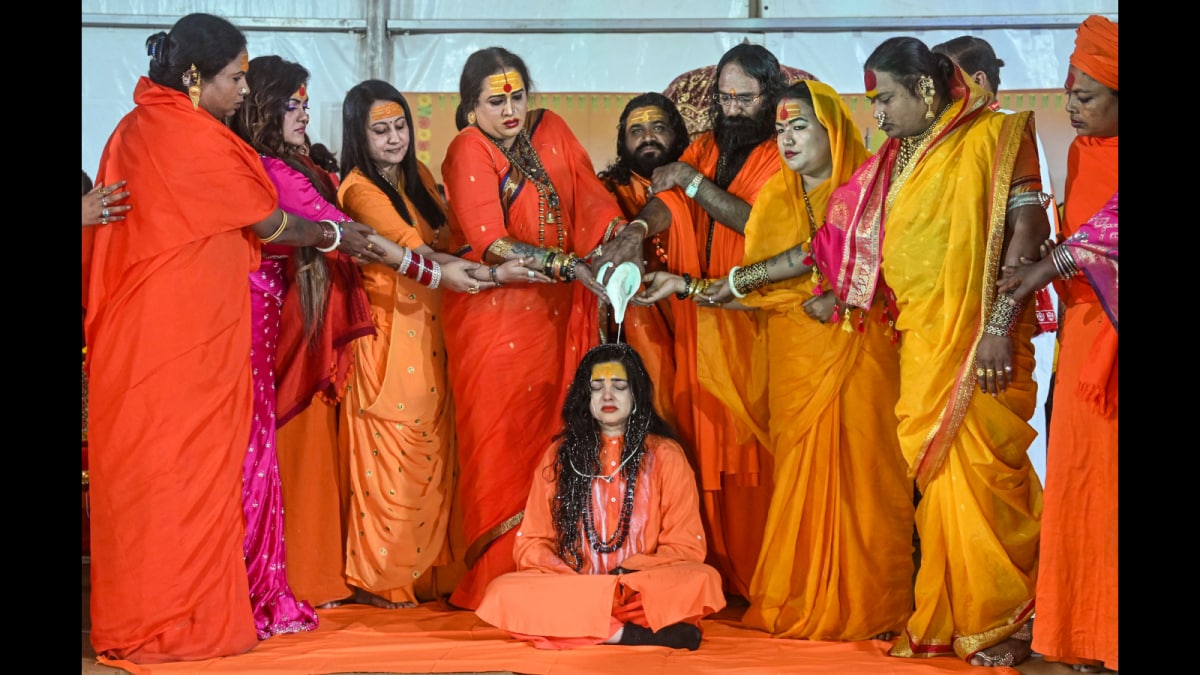 |
|
The expulsion of Mamta Kulkarni, a former Bollywood actress, from the Kinnar Akhara, a Hindu monastic order for transgender individuals, after only seven days as a Mahamandaleshwar (a high-ranking title), has ignited significant controversy and highlights the complex dynamics within the Akhara and the scrutiny faced by its members. The decision, announced by Rishi Ajay Das, the founder of the Kinnar Akhara, was based on a confluence of factors, each raising questions about the suitability of Kulkarni for such a prestigious position. The speed with which the decision was made, and the stark contrast between her initial welcome and swift removal, underscore the gravity of the issues raised by the Akhara.
One of the most significant reasons cited for Kulkarni's expulsion was the manner of her appointment. The Kinnar Akhara argues that her direct elevation to Mahamandaleshwar, bypassing traditional stages of renunciation and spiritual preparation, violated established protocols. The Akhara maintains that aspiring Mahamandaleshwars should first undergo a period of sanyas, characterized by a commitment to renunciation, typically including the head-shaving ceremony. This process, they assert, allows for a thorough assessment of an individual's readiness and commitment to the principles of the Akhara. Kulkarni's appointment, lacking this foundational step, created internal dissent and ultimately undermined the Akhara's authority.
Adding to the controversy is Kulkarni's past. Her career in Bollywood, marked by a somewhat controversial public image and a topless photoshoot, was deemed unsuitable by a significant portion of the Akhara. This aspect of her background caused unease among members, who felt her image clashed with the Akhara's spiritual ethos. Further compounding concerns are the allegations linking Kulkarni to organized crime and to alleged drug lord Vicky Goswami. These allegations, which include accusations of treason and involvement in illicit activities, seriously questioned her moral character and suitability for a position of religious authority within the Akhara.
The Akhara's rules and regulations regarding sanyasis were also brought into sharp focus by Kulkarni's case. The requirement for sanyasis to wear a Vaijanti Mala, a specific type of sacred necklace, was not met by Kulkarni, who instead wore a Rudraksha Mala. This seemingly minor detail points to a broader lack of adherence to the Akhara's prescribed practices. The head-shaving ceremony, a fundamental aspect of the sanyas initiation, was also absent. These violations, coupled with other issues, led the Akhara to conclude that Kulkarni's appointment had been fundamentally flawed and her conduct incompatible with the Akhara's spiritual principles.
The internal divisions within the Kinnar Akhara are undeniable. The initial controversy surrounding Kulkarni's appointment revealed deep-seated disagreements about her suitability. The decision to expel her, therefore, was not merely a matter of individual disapproval, but a reflection of broader concerns regarding the Akhara's standards, procedures, and ability to manage internal conflicts. The expulsion of Acharya Mahamandaleshwar Laxmi Narayan Tripathi alongside Kulkarni suggests that the conflict extended beyond Kulkarni herself, indicating deeper fault lines within the Akhara's leadership structure. The incident raises questions about accountability and the processes for appointing and overseeing Mahamandaleshwars within the Akhara.
The Mamta Kulkarni case highlights the tension between tradition and modernity within religious organizations, especially those grappling with evolving social norms and the complexities of managing public image. The swift and decisive action taken by the Kinnar Akhara underscores the importance of upholding its internal standards and the significant implications of such a high-profile appointment. The lasting impact of this event will be felt not only within the Akhara but also more broadly in the Hindu religious community and beyond, prompting discussions about inclusivity, accountability and the balance between spiritual leadership and public perception.
Source: 5 Reasons Why Mamta Kulkarni Was Expelled From Kinnar Akhara
